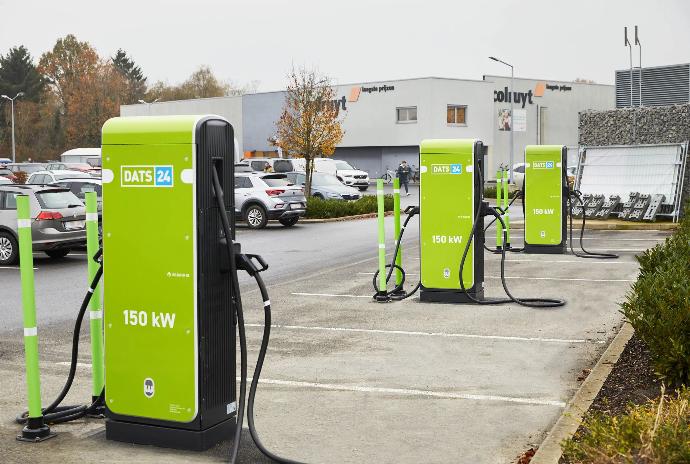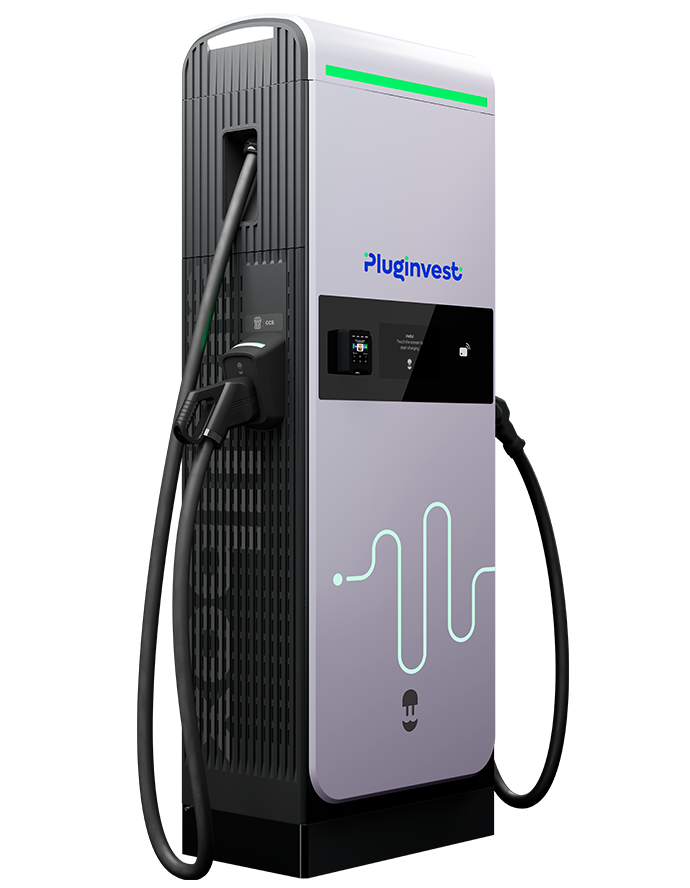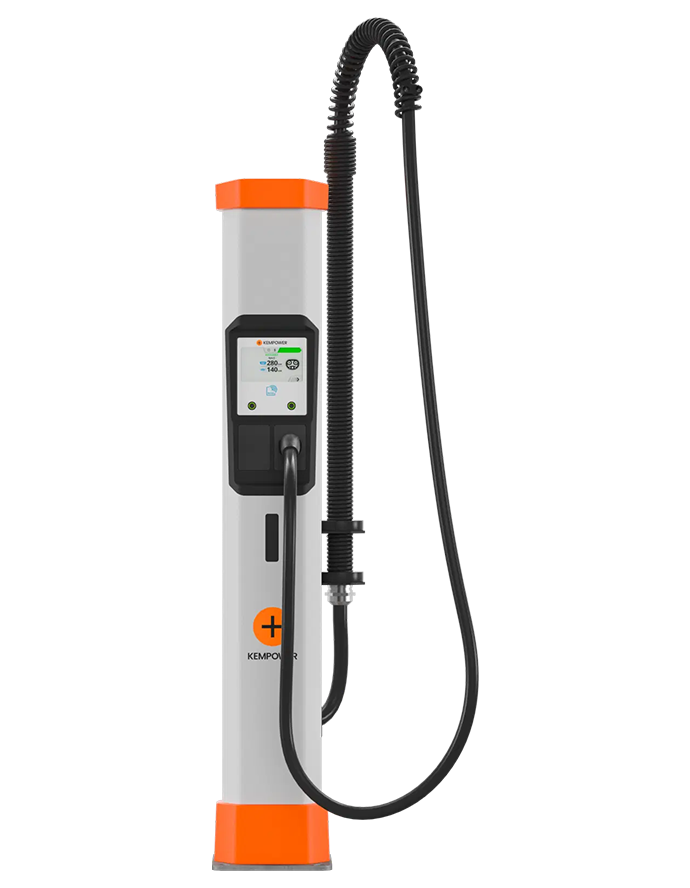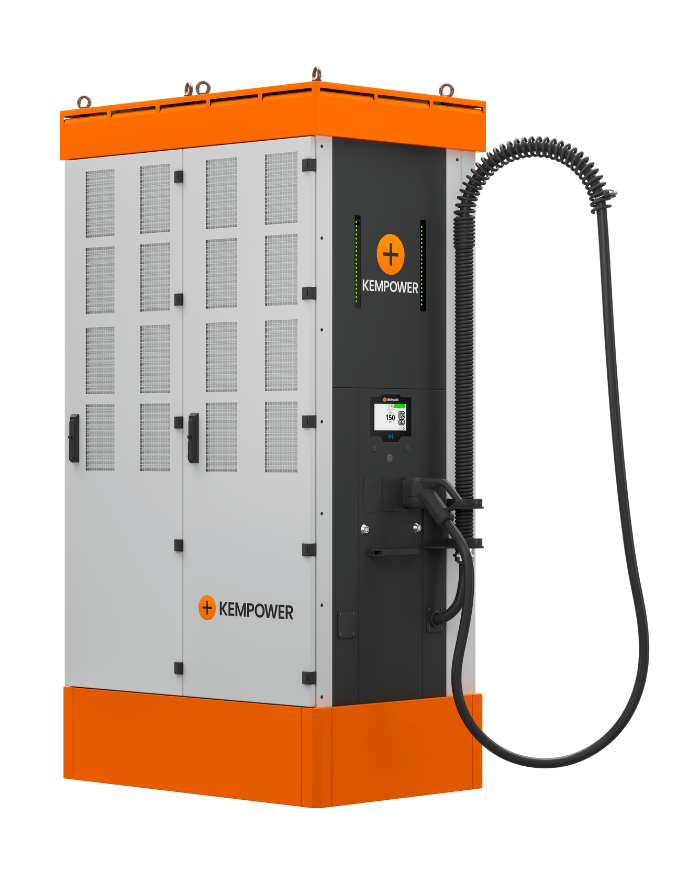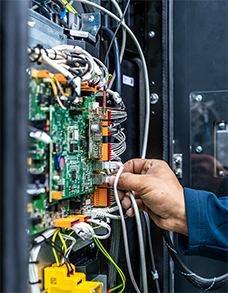e-Truck Charging offering

Products
-
Pluon AC (43 kW)
-
Kempower MCS Charger (up to 1 MW)
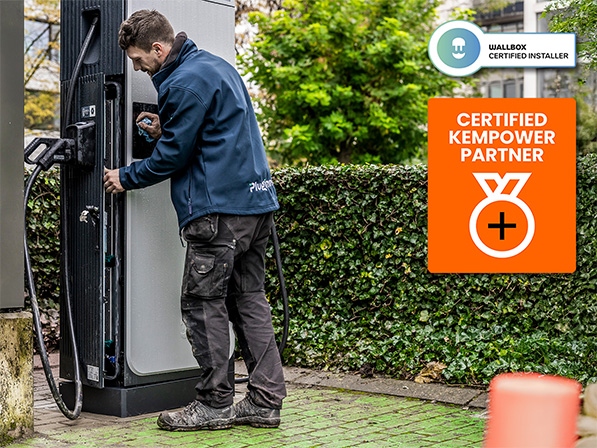
Services
-
Installation of medium-voltage station
Sustainable transport is gaining importance
Sustainable transport and logistics are the future! Pluginvest supports your company in every aspect of this transition, from A to Z. From consultancy to installation to aftercare, we provide a complete solution with total peace of mind, ensuring your company is never on its own.
Request more info
Tailored charging solutions
Depending on your company’s needs, we provide the right high-power charging stations for your situation. We offer both AC and DC chargers, with capacities ranging from 43 kW to 400 kW. With us, you get a full range of powerful, smart, and future-proof charging solutions for every scenario.
Tailored services
Pluginvest not only installs charging infrastructure tailored to your company’s needs, but also provides long-term services to maximise the uptime of your infrastructure, ensuring your fleet is never left without battery charge and guaranteeing the highest up-time.
Certified Installer & Service Partner
Pluginvest is both a Certified Installer and Service Partner of Wallbox and Kempower. This enables us to deliver the highest quality by having installations and interventions carried out by our qualified technicians.
Strengthen your sustainable image
Today, companies are more focused than ever on sustainable solutions. Reducing environmental impact and enhancing corporate image are key drivers. Pluginvest works with your business to make this transition achievable.
Smart charging stations for your fleet
FAQ
For e-trucks, you need heavy-duty, high-power charging solutions to ensure they are fully charged in time. That’s why Pluginvest offers DC charging stations that can deliver up to 400 kW. With this capacity, an average electric truck (HCV / HDV) with, for example, a 600 kWh battery can be fully charged in just 1 to 2 hours.
Yes, absolutely! This can even be done in two ways:
Public operation
By making your charging infrastructure publicly accessible, you can set your own tariffs. This way, you earn money on every kWh charged, for example by external transport companies charging while loading their trucks. A true win-win.
e-Credits
E-credits are a type of value unit introduced by the government to make the fuel sector more sustainable. For every kWh charged via a public charging station, 1 e-credit is generated. These e-credits were designed to support green and sustainable transport and lower the barriers for companies. With your charging stations, you can therefore generate revenue per kWh charged, regardless of whether your stations are public or not. More info can be found in our Pluginsights blog article.
Yes, there are some important permits and regulations to consider when installing charging points. Depending on the location and type of installation, building or environmental permits may be required. There are also standards for safety and accessibility of charging stations. It is also important to comply with tax and energy regulations. Pluginvest helps you meet all relevant requirements.
Installing a DC fast charger requires extensive electrical and civil works. It is therefore essential to start with an assessment of the possibilities at the intended location.
A power study must first be carried out to determine how much power is available for the charging stations. Based on this, it becomes clear whether a grid upgrade will be required at the project site to ensure all business activities have sufficient power.
For projects with multiple charging points or DC stations, a regular low-voltage connection is often insufficient, making a medium-voltage cabin necessary. This installation converts electricity from the medium-voltage grid (10–15 kV) to low voltage (400 V), making higher power levels available for heavy charging infrastructure.
The installation process starts with a power study and a grid connection request with the grid operator. This is followed by extensive civil works, laying and connecting medium-voltage cables. From the low-voltage distribution board, the electricity is distributed to the chargers. The installation includes comprehensive protection and metering for safety and management.
After completion, an official inspection is carried out by a certified body. The installation is then commissioned and handed over to the operator. In this way, the medium-voltage cabin becomes the beating heart of large-scale charging projects.
Partnership DATS 24
Wondering how Pluginvest is working with DATS 24 to contribute to a greener future? In this case study, we show how we implemented innovative charging solutions that make electric driving easier and more accessible. Read more about the benefits and results of our collaboration.
Read the full case study
